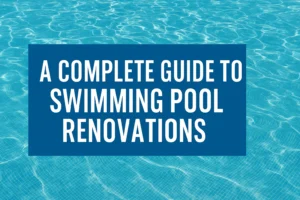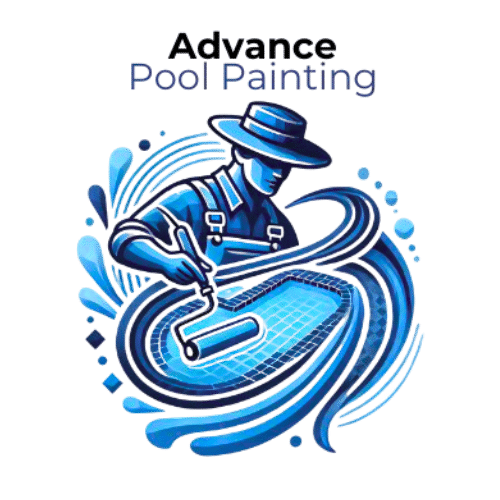Pool resurfacing costs can range from $3,000 to over $20,000. Did you know that?
Most homeowners spend about $11,000 to resurface their pools, though prices typically fall between $6,000 and $15,000. Your pool’s type and chosen finish determine the final cost. Concrete pool owners can expect to pay between $3,000 and $9,000, while fiberglass resurfacing runs from $5,100 to $7,700. Luxury finishes such as glass tiles can drive costs up to $20,000 or more.
The project’s labor costs add $45 to $65 per hour to your budget. We’ll show you ways to cut these costs while maintaining quality work.
This piece explains what you’ll pay for concrete, fiberglass, or pebblecrete pools and reveals seven expert ways to save thousands on your resurfacing project. Our team’s 25+ years of pool restoration experience and clear pricing knowledge will help you make informed decisions.
Want to give your pool a fresh look without emptying your wallet? Let’s take a closer look.
What is Pool Resurfacing and Why It Matters
Pool resurfacing gives your swimming pool a fresh new layer to replace the worn-out top surface. This process fixes the interior surface that touches water and repairs damage from chemicals, weather, and daily use.
Who needs resurfacing and when to do it
Your pool sends clear signals when it needs work. Watch out for these warning signs:
Rough or abrasive texture – Swimmers complain about scraped feet or the surface feels rough
Stains and discoloration – Stubborn stains that won’t go away or patchy coloring
Cracks or structural damage – Spider-web cracks or bigger structural breaks
Peeling or flaking surface – Plaster pieces coming off and showing concrete underneath
Leaks – Your pool takes longer to fill or needs more water than usual
Chalky residue – White powder shows up on hands after touching pool walls
Concrete pools usually need new surfaces every 8-10 years. The timeline changes based on care and environment. Fiberglass pools last longer and need work every 15-30 years. Plaster pools might need attention just 3-7 years after installation.
Spring and fall work best for these projects. You won’t miss out on swimming during summer months this way.
Quick benefits of resurfacing your pool
A fresh pool surface brings many perks beyond looks:
Enhanced safety – Gets rid of rough spots and sharp edges that might hurt swimmers
Improved cleanliness – Smooth surfaces fight bacterial growth and make cleaning a breeze
Water efficiency – Fixed leaks cut water use and lower your bills
Chemical balance – You’ll need fewer chemicals to keep water quality right
Extended lifespan – Stops damage that could force you to replace the whole pool
Increased property value – A beautiful, well-kept pool makes your home more attractive to buyers
The work starts with draining your pool and taking off the old surface. Next comes fixing any cracks or damage before putting on the new finish. The final step fills the pool and balances the chemicals.
Fixing small problems early through resurfacing helps you dodge bigger repair bills later. Small surface flaws can turn into major structural headaches if you ignore them. A complete pool replacement costs way more than resurfacing. This maintenance pays off by giving you a longer-lasting pool that’s more fun to use.
How Pool Resurfacing Works
![How to Save Thousands on Pool Resurfacing Costs: Expert Guide [2025 Prices] 343 Coiled green hose and blue toolbox with safety helmets next to a swimming pool during resurfacing work.](https://advancepoolpainting.com/wp-content/uploads/2025/08/Coiled-green-hose-and-blue-toolbox-with-safety-helmets-next-to-a-swimming-pool-during-resurfacing-work.webp)
Image Source: Alan Smith Pools
Pool resurfacing can give your aging pool a fresh new look. You should know what each stage involves to plan better and understand what’s coming.
Step-by-step resurfacing process
Here’s what happens during a full pool resurfacing:
Draining the pool – The team starts by emptying your pool completely so they can work on the entire surface.
Surface preparation – After draining, workers prep the existing surface using sandblasting, hydroblasting, or jackhammering to remove damaged parts. This step creates the most noise and dust.
Structural repairs – The team fixes any cracks, leaks, or damage before adding new materials.
Bond coat application – They apply a special prep coat or bond-kote that helps new material stick well to the existing structure.
New surface application – Workers mix and apply your chosen finish to the pool’s interior, usually 3/8 to 1/2 inch thick.
Troweling and finishing – They hand-trowel the new surface to create a smooth finish.
Curing – The new surface needs proper curing time. This step is vital for lasting results.
Refilling and balancing – The final step involves filling the pool and balancing chemicals for safe swimming.
Timeframes and what to expect
A typical resurfacing project takes 7-14 days to complete. Several things can affect this timeline:
Pool size – Bigger pools need more time for each step.
Weather conditions – Rain, humidity, and temperature can change drying and curing times by a lot.
Chosen material – Different finishes need different application and curing times.
Additional renovations – Adding other upgrades will make the project longer.
The curing stage (3-7 days) and surface preparation (1-3 days) take the longest. Most experts suggest waiting about a week before swimming to let chemicals balance properly.
You’ll notice some noise and dust during the project, especially when they’re prepping the surface. Good companies will protect the areas around your pool.
Common mistakes to avoid
These mistakes can get pricey and hurt your pool’s lifespan:
Unnecessarily removing old concrete – Don’t remove all the concrete unless there’s serious structural damage. Concrete overlays work well and cost less.
Neglecting proper surface preparation – A dirty or poorly prepped surface won’t hold new materials well. Make sure the surface gets a really good cleaning and repair job.
Overlooking drainage systems – Good drainage will keep your pool deck safe and prevent water damage. Standing water leads to rust, stains, and safety issues.
Poor planning and budgeting – Not planning for all costs can leave your project unfinished. Work with experts to create a detailed plan with some backup money.
Choosing low-quality materials – Cheap materials will need repairs sooner. It’s worth spending more on quality finishes that last longer.
Understanding these steps and avoiding common mistakes will help your pool resurfacing go smoothly and last longer.
Cost Breakdown by Pool Type and Finish
![How to Save Thousands on Pool Resurfacing Costs: Expert Guide [2025 Prices] 344 Bar chart showing pool resurfacing costs ranging from $6,000 low end to $15,000 high end with $11,000 average.](https://advancepoolpainting.com/wp-content/uploads/2025/08/Bar-chart-showing-pool-resurfacing-costs-ranging-from-6000-low-end-to-15000-high-end-with-11000-average.webp)
Image Source: HomeGuide
Pool resurfacing costs depend on your pool type and finish choice. Most homeowners pay between AUD 7,644 to AUD 22,934 to resurface their pools.
Concrete pool resurfacing cost explained
Resurfacing concrete pools costs more than other types. You’ll pay between AUD 9,173 to AUD 22,934. These higher prices come from the extra work and materials needed to restore concrete surfaces properly.
A standard 9 x 4 meter concrete pool costs AUD 9,173 to AUD 13,760 to resurface. Your choice of concrete finish will shape the final price. Simple replastering starts at AUD 3,057 for smaller pools, while premium finishes can reach the higher end of the range.
Fiberglass pool resurfacing cost range
Fiberglass pool resurfacing runs between AUD 7,644 and AUD 22,934. Size, condition, and location all play a role in the final cost. Smaller pools measuring 6 x 2.5 meters usually cost AUD 3,210 to AUD 4,892.
Minor repairs cost less. A new gel coat with painted topcoat ranges from AUD 1,528 to AUD 1,834. Location matters too. Perth’s prices run higher at AUD 13,760 to AUD 22,934 because of increased material and labor costs.
Pebblecrete and tile finish costs
Pebblecrete resurfacing ranges from AUD 10,702 to AUD 22,934, based on pool size and finish quality. Flat surfaces cost AUD 129 to AUD 229 per square meter. Sloped areas add AUD 152 to AUD 305 to the total.
Tile finishes are the luxury choice, costing AUD 6.12 to AUD 45.87 per square foot. Glass tiles cost more but last longer—often 25+ years compared to pebblecrete’s 15-20 year lifespan.
Labor and material cost factors
Labor makes up much of your resurfacing budget. Professionals charge AUD 68.80 to AUD 99.38 per hour on average. Complex jobs or custom designs might cost AUD 91.74 to AUD 122.32 per hour.
Material prices vary based on quality and type. Simple options like epoxy paint (AUD 1.53-AUD 3.06 per square foot) cost nowhere near premium aggregates (AUD 7.64-AUD 10.70 per square foot) or glass mosaics (AUD 122.32-AUD 229.35 per square meter).
How much does it cost to get a pool resurfaced?
Your pool’s size, material choice, and current condition determine the total resurfacing cost. Here’s what you can expect:
Small pools (up to 20m²): AUD 7,644-AUD 12,231 for simple finishes; AUD 18,347-AUD 22,934 for premium options
Medium pools (20-40m²): AUD 12,231-AUD 18,347 for simple finishes; AUD 22,934-AUD 30,579 for premium materials
Large pools (40m²+): AUD 18,347-AUD 27,521 for simple finishes; AUD 30,579-AUD 45,869 for luxury finishes
Remember to include preparation costs like draining (AUD 267-AUD 344) and cleaning (around AUD 382). Want a quote for your pool? Call 0401 738 748 or email ray@advancequality.net for a free estimate.
7 Ways to Save Thousands on Pool Resurfacing
Want to save big on pool resurfacing without cutting corners? Smart planning and the right choices can save pool owners thousands. Here are seven proven ways to keep your money where it belongs – in your pocket.
1. Choose cost-effective materials
Your choice of materials makes a huge difference in the final cost. Traditional plaster costs range from AUD 10.70 to AUD 12.23 per square foot, making it your most budget-friendly choice. High-end materials like Pebble Tec will set you back AUD 16.82 to AUD 29.05 per square foot. Pool paint offers another money-saving option – acrylic paint costs about AUD 76.45 per gallon and lasts 2-3 years, while epoxy paint costs AUD 152.90 per gallon but lasts longer.
2. Time your project during off-season
You’ll find better deals if you schedule your resurfacing in autumn or winter. Pool contractors often drop their prices as work slows down. The best part? You’ll spend less time waiting and get more attention from your contractor since they won’t be swamped with other projects. Some might even offer better rates as they look at their year-end numbers.
3. Bundle resurfacing with other upgrades
Package deals usually pop up when you combine resurfacing with other pool renovations. Your pool will already be empty, so it’s the perfect time to add new tiles, lighting, or pool coping. This approach saves more money than doing each project one at a time.
4. Do prep work yourself (if safe)
Most homeowners shouldn’t try full DIY resurfacing, but taking care of some prep work can save AUD 68.80 to AUD 91.74 per hour in labor costs. You can safely drain and clean your pool before the pros arrive. Just remember – DIY mistakes might cost more to fix than hiring professionals from the start.
5. Compare multiple quotes
The best deals come from shopping around and getting several contractor quotes. Know your pool’s size and material costs before you start calling companies. This homework helps you spot fair prices and gives you room to negotiate.
6. Avoid unnecessary add-ons
Put your money toward essential repairs instead of just making things look pretty. Your pool’s structure matters more than cosmetic touches – it prevents bigger problems down the road. A polymer-modified overlay works just fine in most cases. Removing old concrete costs a lot and you rarely need to do it unless the structure’s at risk.
7. Plan for long-term maintenance savings
Better materials might cost more upfront but save you money over time. Top-quality surfaces need less maintenance, fewer chemicals, and last longer. Regular upkeep – weekly water tests, equipment checks every three months, and quick fixes for small problems – keeps your new surface looking great and lasting longer.
DIY vs. Hiring a Pro: What’s Really Cheaper?
Pool owners often think about resurfacing their pools themselves to save money. But they miss some key factors that determine if it’s really economical. In stark comparison to this common belief, DIY isn’t always the cheaper option when you look at long-term results.
When DIY makes sense
Small-scale DIY pool resurfacing works best for minor cosmetic repairs like filling small cracks or spot treatments. You could save around 30-40% on labor costs if you have construction experience, the right tools, and enough time. These limited projects still need proper preparation and knowledge of pool chemistry.
Risks of DIY resurfacing
DIY resurfacing can quickly wipe out any original savings:
Structural integrity issues can develop if you don’t apply techniques correctly
Void manufacturer warranties through wrong installation methods
Extended pool downtime because beginners take 3-4 times longer than pros
Equipment rental costs run higher than expected ($300-$500 for specialized tools)
More importantly, fixing DIY mistakes usually costs 50-75% more than hiring professionals from the start.
How to find affordable pros near you
Quality professionals at reasonable rates are available if you:
Get detailed itemized quotes from at least three licensed contractors
Check credentials, insurance coverage, and ask about volume discounts
Ask about financing options, as many good companies offer payment plans
Look at online review platforms that focus on pool renovation specialists
Think about forming neighborhood groups to increase bargaining power
Note that truly affordable professional work strikes a balance between upfront cost and durability. This typically adds 5-10 years of service life compared to DIY work.
Conclusion
Pool resurfacing adds value to your property and brings more joy to your family. Your investment will likely range from $6,000 to $15,000, based on your pool’s type, size, and finish choice. You can cut these costs without sacrificing quality with the right approach.
Smart timing makes a big difference. Planning your project during off-season months saves money, and picking the right materials helps balance initial costs with durability. Getting multiple quotes from trusted contractors will give you fair prices and quality work.
DIY might look like a money-saver, but it often costs more when you factor in mistakes and future performance issues. The best value comes from working with experienced pros while using our money-saving tips.
Your pool needs attention early. Watch for warning signs like rough surfaces, stains, cracks, or water loss. Quick action prevents small issues from turning into expensive structural problems.
A well-done resurfacing job extends your pool’s life, makes it safer, and looks better – no matter if you have concrete, fiberglass, or pebblecrete. The knowledge you’ve gained here will help you make smart choices and save thousands on your project.
Want to turn your aging pool into a fresh backyard paradise? Call us at 0401 738 748 for your free, tailored quote and learn how much you can save on your pool resurfacing project.
Key Takeaways
Pool resurfacing costs can vary dramatically from $6,000 to $20,000+, but strategic planning can save you thousands while ensuring quality results.
• Time your project during off-season months – Schedule resurfacing in autumn or winter to secure contractor discounts and faster service when demand is lower.
• Choose materials wisely for long-term value – Traditional plaster costs $10-12 per sq ft while premium options reach $29+ per sq ft; balance upfront costs with durability needs.
• Bundle projects and compare multiple quotes – Combine resurfacing with other upgrades for package discounts and always get 3+ detailed quotes from licensed contractors.
• Recognize warning signs early to prevent costly repairs – Address rough surfaces, stains, cracks, or water loss before minor issues become major structural problems.
• Avoid DIY for major resurfacing work – While prep work can be DIY-friendly, professional installation prevents costly mistakes and ensures 5-10 years longer lifespan than amateur work.
Most pools need resurfacing every 8-15 years depending on type and maintenance. By implementing these strategies and working with experienced professionals, you can achieve a beautiful, durable pool surface while keeping thousands in your pocket.
FAQS
Q1. When is the ideal time to resurface a swimming pool?
Q2. What are the average costs for pool resurfacing in Australia?
Q3. How does pool resurfacing differ from replastering?
Q4. How frequently should a pool be resurfaced?
Q5. What are some ways to reduce pool resurfacing costs?
Explore Our Other Services
- All Posts
- Blog
![How to Save Thousands on Pool Resurfacing Costs: Expert Guide [2025 Prices] 345 Pool Renovation Gallery Sydney](https://advancepoolpainting.com/wp-content/uploads/2025/08/Services-APP.png)
BeforeAfter BeforeAfter BeforeAfter BeforeAfter BeforeAfter BeforeAfter BeforeAfter BeforeAfter BeforeAfter BeforeAfter BeforeAfter BeforeAfter BeforeAfter BeforeAfter Get Your Free Pool Quote Today...
![How to Save Thousands on Pool Resurfacing Costs: Expert Guide [2025 Prices] 346 Service Areas](https://advancepoolpainting.com/wp-content/uploads/2025/08/Services-APP.png)
Pools Transformed. Families Happy. Results That Last. Areas We Service In Sydney From the North Shore to the Shire, we...
![How to Save Thousands on Pool Resurfacing Costs: Expert Guide [2025 Prices] 347 ADVANCE POOL PAINTING THE HILLS](https://advancepoolpainting.com/wp-content/uploads/2025/08/Services-APP.png)
Pools Transformed. Families Happy. Results That Last. ADVANCE POOL PAINTING IN THE HILLS Families across The Hills trust our licensed...






